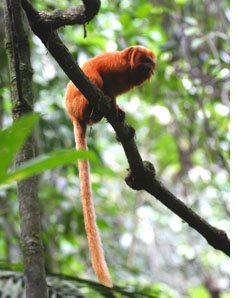Mapping Endangered Species
 What do the California condor, the snow leopard, and the Wollemi pine have in common? They’ve all made the least desirable position on one of the nature’s most important lists: the IUCN Red List of Threatened Species. Now, what do Microsoft and the Zoological Society of London have in common? They’re both Red List partners, working with the International Union for Conservation of Nature(IUCN)—the world’s oldest and largest global environmental organisation—to help understand what species are endangered and why.
What do the California condor, the snow leopard, and the Wollemi pine have in common? They’ve all made the least desirable position on one of the nature’s most important lists: the IUCN Red List of Threatened Species. Now, what do Microsoft and the Zoological Society of London have in common? They’re both Red List partners, working with the International Union for Conservation of Nature(IUCN)—the world’s oldest and largest global environmental organisation—to help understand what species are endangered and why.
The Microsoft partnership was made public at the IUCN World Conservation Congress in Jeju, South Korea. The company is the first and only invited corporate partner for the Red List of Threatened Species.
Why Microsoft? Is it because of the company’s technology prowess? Well certainly in part. But the request stems largely from the presence of a dedicated team of environmental scientists at Microsoft Research Cambridge. This team, the Computational Ecology and Environmental Science Group (CEES), is developing new concepts and methods to enable better predictions about our planet, and has been working with the IUCN on the science and tools to help support the IUCN Red List.
Led by Lucas Joppa, the CEES team’s effort has created a Red List application that uses Microsoft SQL Server 2012 and Bing Maps to enable experts to map where species are found, the threats species face, and the interventions used to negate or prevent these threats. Such mapping is crucial to efforts to halt the seemingly inexorable march toward more extinctions.
As Joppa explains, “We’re working with the IUCN Red List team to build an application that allows people to spatially map threats to species. Capturing this information is vital, and as a group of scientists in Microsoft Research, we understand both the scientific and technical challenges this involves.”
The invitation from the IUCN recognises the scientific expertise of the CEES team, notes Joppa. “What’s really exciting is that we are at the table as scientists, but with the depth and breadth of Microsoft to build on, in terms of people and technology. We feel like we can really make a positive difference.”
The Red List application is actually just one of many environmental science tools developed by the CEES group, which works closely with Microsoft Research Connections to provide scientists around the world with tools that focus on data, modeling, and decision-support for the earth and environment. Please take a look at some of our other tools, all of which were made for scientists by scientists. These tools typify Microsoft Research’s commitment to provide resources that accelerate research and discovery and enable more effective transformation of data into decisions.
Visit Earth, Energy, and Environment at Microsoft Research Connections to learn more about our collaborations with academic researchers and organisations worldwide.
—Kenji Takeda, Solutions Architect and Technical Manager, Microsoft Research Connections EMEA
Learn More